
Royal supplier of colour 2025 2026 landscape autumn


Royal supplier of colour 2025 2026 landscape autumn







In order to be as up-to-date as possible with news, facts and developments in the field of sustainability and biodiversity, we update our website almost weekly.
This catalogue is a practical tool for selecting flower bulbs for your projects. However, it is possible that certain types and mixtures are temporarily unavailable or sold out. You can find the information on the website. The specialists at JUB Holland are happy to provide you with additional information and answer your questions.

JUB Holland
Robijnslaan 43 2211 TG Noordwijkerhout Netherlands
tel. +31 (0)252 373 762 info@jubholland.nl www.jubholland.nl
SOCIALS




jubholland
jub_holland
jub-holland
jub_holland
JUB Holland proudly welcomes the Flower Parade Bollenstreek from 2025! Since 1947, the Flower Parade Bollenstreek has symbolized the splendor of spring, and we are delighted that from 2025 the decoration of the parade floats will take place at JUB.

Trends for 2025 - ’26 / Contact / Index
All about JUB
JUB & sustainability
Explanation of symbols
Additional subjects on our website
JUB Flowerdesigner App
New in 2025
Bulbs at cemeteries
Inspiration
The Vibrant Verge
Climate adaptive planting
Parks & naturalising bulbs
Mechanical planting
Verges and green areas (mixtures)
Eye-catchers
Assortment
Organic flower bulbs (assortment)
Alphabetical lists
JUB Specialists and terms & conditions
Carien van Boxtel has again created a beautiful design for 2025, called ‘A MYSTERIOUS DUTCH STILL LIFE’. A special mixture in the colours red, white, orange and salmon.
JUB garden nr. 14 at Keukenhof 2025, from March 20 - May 11.

The knowledge and expertise that has been passed down through four generations, is the key to the success of our family business. What began in 1910 as Jac. Uittenbogaard, is now an internationally operating flower bulb company, under the name JUB Holland. Within our company, all facets of craftmanship are covered. This is how we distinguish ourselves from other suppliers.
The landscape specialists for landscape architects, gardeners and public parks. More about our team (contact details) can be found on page 143 of this catalogue. They are happy to think along with you about your current and upcoming projects and provide advice on how to achieve the best results.

The great thing about JUB Holland is that we are one of the few companies in the bulb sector to manage a broad variety of aspects ourselves. We grow bulbs on our own nursery, we breed, we trade. This characteristic is deeply intertwined with our historical development. On 35 hectares of our own land we grow 49 tulip varieties and 16 daffodil varieties, all certified of course (MPS A and PlanetProof).

We gladly join forces with others. That is why we are part of Remarkable Tulips, a collective of seven flower bulb growers and exporters that works on the breedingand development of new tulip varieties. These bulbs are of the best quality and have a high resistance to diseases. Breeding requires patience, but the result is more than worth it: the most stunning and mostexclusive tulips.

We have a strong reputation to uphold with our products. The quality of our bulbs is our priority and we work with top designers for public green spaces and parks. We are always aware of the latest trends. We meet tomorrow’s demands for high-quality products that are produced and marketed with respect for people, society and the environment. With regard to our famous bulb mixtures (eye-catchers and machine planting mixtures), we work closely with landscape architects who advise us and compose these mixtures with us.
Wij streven ernaar om onze
pensioen en beogen

Creativity is our strength. Greening up cities is an international trend, in which JUB Holland plays an active role (we offer complete concepts). Indeed, you could even call us a trendsetter: in the 1980s we developed the bulb planting machine, which plants flower bulbs under grass at lightning speed. Our customers are local authorities, companies, parks and recreation departments, gardeners, and landscape architects in Europe.


JUB has its own trial garden with the entire range (more than 800 varieties), mixtures, eye-catchers and much more. All of this can be seen from mid-March to the end of May. The trial garden is open to customers by appointment.
Every spring, JUB organizes study days to a local park, Keukenhof and our own company. Please note the special announcements regarding the exact dates of these interesting and educational study days.

The knowledge & expertise passed down through 4 generations is the key to the success of our family business. To hand over a healthy and future-proof company to the next (5th) generation, JUB Holland makes an active and structural contribution to the development of a more sustainable flower bulb sector. We focus on improving the living space (environment), the sustainable employability of employees and stimulating collaboration. In this way, we contribute to the Sustainable Development Goals.






JUB Holland actively contributes to a more sustainable flower bulb industry. Our daffodils and tulips are MPS-A and On the way to PlanetProof certified, and we continuously take steps to reduce environmental impact. For example, we reduce phosphate leaching by 30% - 60% by using drains with iron sand. We conduct field studies to reduce the use of crop protection products, such as applying wood fibre for weed control, hot air treatment of daffodils instead of hot water treatment, and promoting virus resistance and plant resilience in new tulip varieties through breeding company Remarkable.
JUB Holland is a member of the Sustainable Suppliers of Horticultural Quality Products Foundation, which focuses on sourcing and trading 100% certified flower bulbs. Since September 2023, the foundation has been a member of Floriculture Sustainability Initiative (FSI). We are constantly looking for more sustainable materials and solutions. Our flower bulbs are packed in PCR film (>90% recycled material). Our shipping boxes are sealed with tape made of 85% recycled PP. We encourage recycling by overhauling displays, repairing wooden pallets and reusing cask in planting projects. Within JUB Holland, six waste streams are recycled at a local recycling company.

JUB Holland uses 100% Dutch green electricity, generated by 971 solar panels (50% of annual requirements) and purchasing green energy for the remaining. For internal transport, we exclusively use electric forklifts and pallet trucks. In 2024, we purchased two 100% electric company cars. By investing in energy saving, we have reduced our gas consumption by 40% and electricity consumption by 18% by 2024 since 2022, resulting in a 29% CO2 reduction. In May 2024, we received the CO2 Awareness Certificate.
JUB Holland contributes to sustainable and liveable cities by greening public spaces. For example, we have installed 55 Vibrant Verges, which promote biodiversity and inform the local community. On our company grounds, we have installed landscape elements, including a nature-friendly bank (150m), beech hedges, a 325m² biotope with native planting for partridges, duck baskets and nesting boxes. We also apply ecological ditch edge management by retaining 10% of the shore vegetation.








Wij streven ernaar om onze medewerkers met plezier aan het werk te houden tot aan pensioen en beogen een omgeving te creëren waarin onze medewerkers vitaal blijven.
At JUB Holland, we are committed to creating a safe, healthy and enjoyable working environment in which employees remain vital and can develop. We invest in training, improved work processes and cooperate with organisations that offer opportunities to people distanced from the labour market. We also share our passion for flower bulbs with young people through internships and educational initiatives, thereby building the future of the sector together.




We believe that creating partnerships, building long-term relationships, and sharing experiences contribute to achieving our sustainability ambitions.

Our partnerships aim to inform and inspire individuals, companies, and governments about the application possibilities of flower bulbs to green outdoor spaces.




Flowering period (months)
Height in cm.
Bulb size, circumference in cm.
Naturalising bulbs
Bulbs per square meter
Mowing period (months)
Sunny location
Semi-shade location
Shady location
Humus-rich location
Calcareous location
Moist location
Bulbs suitable for pots
Organic bulbs
Fragrant flowers

Cut flowers
Bulbs/mixtures attracting bees
Bulbs/mixtures attracting bees and butterflies

There are many interesting topics that unfortunately cannot all be included in this catalogue. Therefore, you can use these practical links to the topics on the JUB Holland website by scanning the QR code (phone camera) or by clicking on the text links in the digital PDF.

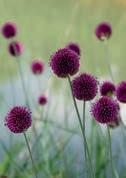




Spring-flowering bulbs beautify streets and squares in villages and cities. They add colour to early spring. Colourful rows of tubs and bowls with spring bulbs brighten residential and shopping streets, squares and shopping centres.
JUB supplies hundreds of varieties of spring-flowering bulbs for gardens and parks. We highlight the 25 very best in this brochure: very strong species, most reliably recurring or naturalising, which give every garden a huge boost! Would you also like to participate in this flyer with your own logo and address?
Lush roof gardens are adorning more and more roofs. Beautiful borders of perennials combined with waving ornamental grasses. Together with the supporting structure of trees, hedges and shrubs, they form a beautiful unity. Flower bulbs on the roof are strategic eye-catchers in spring and summer.
Whether it concerns 10m2 or 100m2, creating a cutting garden is always possible. Commercial or for personal use. Make a plan. What colours, types and flowering times do you have in mind? For a successful cutting garden, it is important to select the right varieties. Not every daffodil or tulip is suitable. We are happy to advise you.
Biodiversity is a term we use to indicate the richness of nature. It concerns the great diversity of animals, plants, habitats and genes. Biodiversity creates ecosystems in which organisms can live, such as humans, through interaction with environmental factors..
A combination of flower bulbs with perennials creates a varying palette of flowering times, colours and scents. We can advise you on the best combinations. Bulbs and perennials reinforce each other.

The visualizations on the iPad bring spring to life. It is possible to share the design with your customers. We are happy to advise you on the many possibilities of this app. With this app it will be easier to get an impression of the many options for applications of flower bulbs in public green, garden or park. Read more about the App on the JUB website via the QR code shown here.
Wij streven ernaar om onze medewerkers met plezier aan het werk te houden tot aan pensioen en beogen een omgeving te creëren waarin onze medewerkers vitaal blijven.






















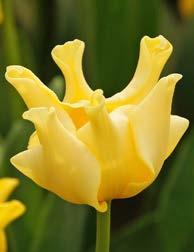








- cont’d -


















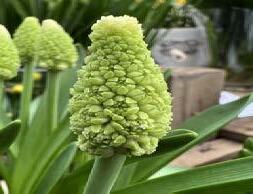
Mixture Hamburg



Mixture Oegstgeest






Bulbs are an ideal choice for cemeteries, where they add both serene and aesthetic value to the surroundings. Varieties such as narcissus, crocuses, and snowdrops bloom early in the year and return annually, providing a lasting, colourful contribution to the resting places. These flower bulbs require little maintenance and fit perfectly within the ecological green management of cemeteries.
JUB Holland provides carefully curated bulb mixtures that contribute to a sustainable and calming environment, where biodiversity and remembrance come together.





Mixture Floriade, phase 2 Roosendaal, Netherlands

Mixture Kent, phase 1, Beuningen, Netherlands

Allium mix Harderwijk, Netherlands

White and orange tulip ribbon Groot-Bijgaarden, Belgium

Biodiversity is increasingly important in the urban environment. In addition, much attention is paid to ecological management and development of wildflower vegetation. The Vibrant Verge concept has been developed to increase biodiversity and guarantee a long flowering period.
Within this concept, the strengths of annual, biennial and perennial (indigenous) seed mixtures are combined with a tailor-made bulb mixture. This ensures vegetation with a long flowering time, increased biodiversity, extensive, ecological maintenance and the seasonal experience gets enhanced.
Our sales team is happy to tell you more about the concept. The Vibrant Verge is a partnership of JUB Holland and Pictorial Meadows LTD. For more information: www.thevibrantverge.co.uk

Phase 1, March - April

Phase 3, May - June

Phase 2, April

Phase 4, July - August






A prairie garden often has a low-maintenance planting system, with a natural balance between plants. The combinations of strong perennials and ornamental grasses give a completely different image in colour and structure five to six times a year. The image is attractive all year round. Because many prairie plants start late, bulb plants are used for colour in the spring.
Not all flower bulbs are equally drought resistant, but species from a continental climate are candidates for the increasingly warmer and drier locations in our changing climate, provided that the drainage is good: these bulbs cannot withstand wet winters in combination with frost.
Allium
Camassia
Ornithogalum
Iris hollandica
Botanical tulips
Botanical narcissus





A whole new form of specially designed wet locations are so-called wadis. A wadi actually works just like a floodplain or a river bed. It is a designated place that is occasionally completely flooded. At this location, the water can slowly sink in and is then slowly transported away to the ground and surface water. In this way it protects the sewage system.
A wadi system is designed to collect a certain volume of water. The wadi is usually calculated for a maximum water depth of around 30 to 40 cm and is then under water for a short period, usually no more than 24 hours. Outside these inundation periods, the wadi is often dry for a long time.
Camassia cusickii, leichtlinii & quamash
Nectaroscordum siculum
Leucojum aestivum ‘Gravetye Giant’
Fritillaria meleagris
Narcissus jonquilla hybrids
Galanthus nivalis
Muscari azureum & botryoides

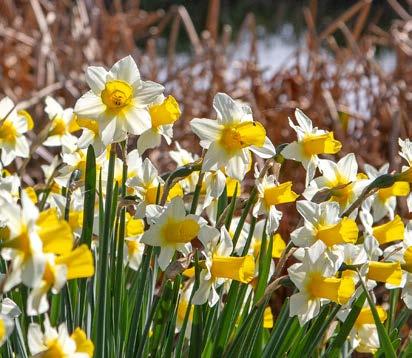




Naturalising bulbs, many of them being native varieties, can be found in this section. Our naturalising bulbs are all nursery grown and not collected from the wild! In general, they require minimal maintenance and many of them will grow in (semi-) shady locations.
The most popular naturalising bulbs in woodlands are undoubtedly snowdrops, wood anemones and English bluebells. Wood anemone (Anemone nemorosa) is native to almost the whole of Britain on various types of soils and habitats. The rhizomes will spread steadily if conditions are right, around or under trees.
Very spectacular are the bluebell woods where millions of violet-blue flowers spread their sweet scent, but bluebells can also be found in more open spaces. Galanthus (snowdrops) are usually the first flowers to appear in winter. The discussion whether they need to be planted as dry bulbs or ‘in the green’ will probably never end. At JUB we always advise to plant snowdrops in late summer or early Autumn as fresh dry bulbs for the best result.



Hyacinthoides non-scripta


When you want to get started with naturalising bulbs, we offer in this catalogue a very wide selection of true species from reliable, often smallscale nurseries. For those who find it difficult to choose varieties which combine well, there are beautiful ready-to-use mixtures available.
Those mixtures provide colour for months and we are happy to advise whether your preferred mixture is also suitable for the particular project. This depends on factors such as mowing, pruning, light andtype of soil. More and more clients are asking for bespoke mixtures, because they want something special: a mixture or planting plan that is completely geared to the location with a theme that matches the specific project. The specialists can advise you.







Galanthus likes moist soil under deciduous trees and shrubs, but also thrives in a warm, sunny location.
Chionodoxa grows in all welldrained soils in sunny or semishaded places. It is therefore very suitable for use under deciduous trees, shrubs and hedges.
Anemone nemorosa feels at home in a shady and humid place. This ground covering variety must be planted immediately upon arrival.
Corydalis cava prefers full shade between trees or shrubs, in a humusrich soil containing moisture. Corydalis cava will produce full ground cover under the right conditions.


Tulipa sylvestris likes a moist, nutrient-rich location in full sun. It grows well in grass and in light shade.


Fritillaria meleagris or ‘snake’s head fritillary’ needs a moist, moderately nutrient-rich soil. They also feel most comfortable in light shade.




This crocus prefers a sunny spot or under deciduous shrubs. The crocus feels at home in almost all soil types as long as they are not too wet for too long.




This is a beautiful late flowering, narcissus. Single, slightly scented flowers. Likes humus-rich soil and a sunny to semi-shaded location.
English Bluebells prefer a light shade in a moderately dry to moderately moist soil.
Erythronium pagoda has beautiful flowers and attractive light mottled leaves. This variety thrives in a sandy humus-rich soil in shade to partial shade.


These scillas attract many bees. Plant them in a sunny to semi-shaded place in well-drained soil. Scillas propagate quickly through bulblets as well as seeds.


The name ‘Summer Snowflake’ is misleading, it flowers already in April / May. They grow well in a moist soil and are therefore suitable for use in clay or loamy soil.








‘Wild Garlic’ prefers a sunny or semi-shady spot in moist, calcareous soil. This allium produces a strong garlic-like smell during the flowering. Plant bulbs immediately upon arrival.
Colchicums mainly grow in woodland and in wet meadows. They love a sunny to partial shaded place. They can also be used for indoor flowering, without soil or water.
Ornithogalum nutans has broad leaves and prefers a sunny to semishaded location. The ‘Drooping Star-of-Bethlehem’ prefers a moist, limy soil.
Arum italicum performs best in damp soil in shade or semi-shade and can easily be combined with ferns, ivy and hostas. The redorange berries appear in August.


‘Star-of-Bethlehem’ likes a sunny to slightly shaded place on moderately moist and moderately nutrient-rich soil.


The winter aconite is one of the earliest flowering bulbs. Eranthis celicica does well under deciduous trees and shrubs.








Chionodoxa grows in all welldrained soils in sunny or semishaded places. It is therefore very suitable for use under deciduous trees, shrubs and hedges.
The real spring bell. It flowers in April/ May and can be used well in moist soil and is therefore excellent for use in clay or loamy soil.
The yellow wood anemone feels at home in a shady and moist place. This ground cover should be planted immediately upon receipt.
The eastern anemone feels at home in a semishaded place. For best results, this ground cover should be soaked in water for a few hours before planting.


Very early flowering scilla. Plant them in a sunny to semishaded position in well-drained soil. The scilla multiplies rapidly by means of the bulb and by seed.


These scillas attract many bees. Plant them in a sunny to semi-shaded place in well-drained soil. Scillas propagate quickly through bulblets as well as seeds.
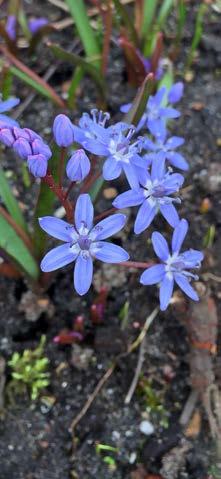



JUB Holland developed a planting machine over 25 years ago that can easily plant flower bulbs in existing lawns or verges. You can find information about this, but also about fertilisation and mowing policy, in this chapter.
With our planting machines it is possible to plant large quantities of flower bulbs under grass, along roadsides, in lawns, on roundabouts, etc. By planting the bulbs with our machine you will achieve a major reduction in labor costs. On our website you can find a lot of information about mechanical planting, how the machines work and the many possibilities. By scanning this QR code you will immediately go to the correct web pages.







On our website you will find in the chapter ‘Practical tips’ a number of points that are important before you plant the bulbs. Scan the QR code to go directly to the right page.
To preserve your bulbs, it is very important to provide them with food. It is possible to carry out feeding in Autumn and Spring with our specially selected biological bulb fertiliser. This is the same fertiliser which we use for our own cultivation at our nursery
Autumn fertilisation
At the same time as the machine planting of flower bulbs in grass, fertilisers can be added.
Spring fertilisation
An environmentally friendly organic food can be used in Spring. The organic component in this fertilizer is converted into humus.

When using naturalising bulbs in grass areas, a commonly accepted guideline is that mowing can be started an average of six to eight weeks after flowering.
This will allow the bulbs enough time to produce seeds and die back naturally. An exception to this rule is the allium, which can be mown directly after flowering. The foliage of most alliums has already died back before flowering.


Are you looking for easy, manageable mixtures which will come back year upon year? Simply look in the section ‘Bulbs for verges and grass areas’.
Here you will also find the bee and butterfly mixtures.
Some of our mixtures just flower in the early Spring, whilst others start early and flower until the end of June! Depending on your mowing regime, you can choose the most suitable mixtures.

GOUDA EMMEN

Fragrant, cheerful and striking mixture of botanical narcissi and several types of hyacinths.
A sunny mixture with scillas, muscaris, botanical daffodils, botanical tulips and fritillaria.



Phase 1, February - April

A nice and very colourful mixture of specie and large flowering Dutch crocuses. Combining these two types results in an extra long flowering time.
2-3 10-15 cm
250/m 2 5 >
A beautiful mixture of many miscellaneous naturalising bulbs.
A perfect naturalising mixture forwoodland areas.
2 - 5 10-25 cm
300/m 2 7 >
Phase 2, April - mMy



Cheerful mixture of various botanical tulips, botanical narcissus, specie crocuses, muscari and ipheion.
350/m 2 8 >
A truly special combination of Autumn flowering crocuses and Spring flowering crocuses, which surprises you twice per year.




Large flowering Dutch crocuses in shades of blue and white are very suitable for early perennial flowering in lawns and other grass areas.
200/m 2 5 >
A fragrant mixture with hyacinths, anemone, muscari, chionodoxa and various botanical tulips and narcissi.
3-4 10-25 cm
250/m 2 6 > 2-3 10-15 cm
This mixture of blues and lilacs, flowers early in Spring.
It is a combination of various miscellaneous bulbs and specie tulips.
2-4 10-25 cm
300/m 2 6 >


An early flowering mixture of large flowering Dutch crocuses in yellow, blue, white and purple.
A bee attracting mixture in two phases. In February-March the rich flowering purple specie crocus, followed in March-April by a blue-red mixture of specie tulips and muscaris.



Phase 1, February - March
Based on the results of our research, we have developed a special bulb mixture that attracts the natural enemies of the oak processionary moth.
2-5 10-30 cm
350/m 2 6 >
A natural mixture of early crocuses, followed by various specie tulips, botanical narcissi, muscari and snakes head fritillaries.
2

Phase 2, March - May



Mixture of the beautiful blueflowering camassias with various botanical narcissi.
Beautiful mixture with, among other things, early flowering botanical tulips, botanical narcissi and muscaris.
This stunning mixture of specie crocuses guarantees an abundant colour effect in very early Spring.


Phase 1, February - March
A very natural mixture of good naturalisers. Corydalis, scillas and chionodoxa form a fascinating colour combination together.
A mixture with a wide variety of bulb types for a long flowering period. Crocuses, chionodoxas, botanical narcissi, puschkinia and specie tulips.

Phase 2, March - April

OXFORD (2 PHASES)

Phase 1, Februariy- March
A nice mixture of anemones, botanical narcissi, botanical tulips, muscari and chionodoxa. 3-5 10-25
This mixture is a surprising combination of early mixed crocuses followed by botanical narcissi, muscaris and bright red tulips.

Phase 2, March - May


Phase 1, February - March
This mixture of botanical narcissi offers a beautiful variation of colour, shape and flowering time.
It even includes some deliciously scented varieties.
A bee attracting mixture in two phases. In February-March a flood ofyellow and soft lilac specie crocuses, followed in March-April by a colourful mixture of specie tulips, muscari and anemones.

Phase 2, March - April
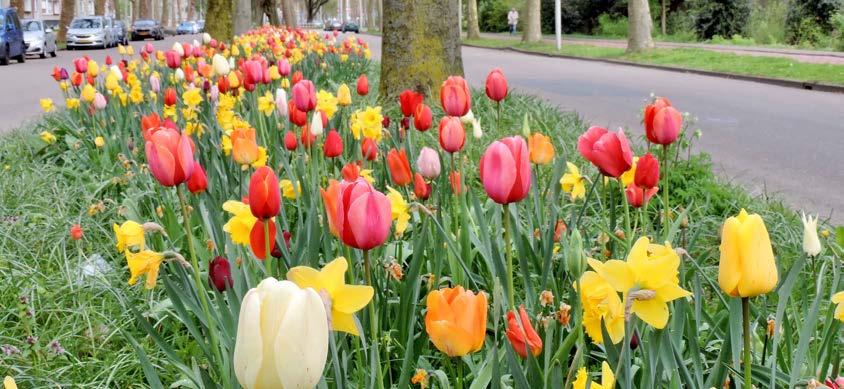

This very colourful mixture of various tulips and daffodils is ideal for main roads and large grass areas.
2-4 25-50 cm
130/m 2 6>
Varied mixture of early crocuses, followed by muscari, various specie tulips and white narcissi.
2-5 10-30 cm
2 6 >



Phase 1, February- April
A beautiful mixture of yellow narcissiand daffodils with an extended flowering period. It includes early small narcissi and the taller daffodils will flower until the end of April.
2-4 30-50
A mixture starting with abundantly flowering crocuses, botanical tulips and botanical narcissi, followed by alliums and camassias.

Phase 2, May - June

This mixture was a great success at the main entrance of Floriade 2012 in Venlo in the Netherlands. From early Spring until summer you will enjoy the great diversity of flowers in this mixture.




Phase 1, March - April
A well-balanced mixture of many types of large flowering daffodils in different forms, colours and shapes.
2-4 30-50 cm
100/m 2 6 >
A surprisingly simple mixture with two colour periods. A bright yellow start in March, followed by pure white in AprilMay.
3-5 20-30 cm 120/m 2 6 >

Phase 2, April - May

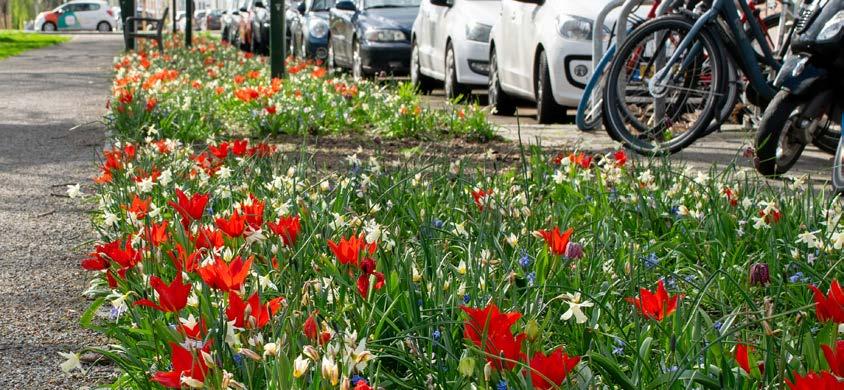
A colourful mixture of botanical narcissi, with a contrasting addition of two tulip varieties.
This early flowering mixture contains various botanical tulips, daffodils, scillas and other various botanical bulbs. OEGSTGEEST

This mixture in pure white is an elegant combination of white crocuses, white chionodoxas, white scillas, white narcissi and white tulips.


Phase 1, February- April
Phase 2, May - June
Cheerful flowering Spring mixture with various types of daffodils, narcissi and striking red tulips.
Mixture Volendam is very suitable for road verges with rough vegetation, with its early and late yellow daffodils, followed by alliums and camassias as an extra surprise.





Intense blue and fragrant hyacinths in combination with various botanical narcissi and a botanical tulip in MarchApril.
Colourful mixture with various narcissi and tulips in March / April,followed in May / June by camassias and alliums.


Phase 1, March - April
Three different colours in one mixture. Yellow narcissi start off the show in March, followed by white narcissi and finishing with camassias in various shades of blue.

Phase 2, April - May

Phase 3, May - June


A late Spring flowering colour sensation for verges and grass areas. A mixture of various alliums,camassias and narcissi.
This mixture is designed for road verges with rough vegetation. The flowering period starts with yellow daffodils,followed by fragrant narcissi in late-April. In May/June the alliums deliver a purple finish in the tall grass.


Create a colour sensation in roadsides and grass areas with this intriguing mixture! Impressive blooms on start to flower in late-Spring. Flower heads of light and deep purple, along with creamy white, last for weeks.


Butterflies are an important link in the food chain and furthermore pollinate flowers when they visit them to suck up the nectar. Butterflies have high standards for their habitat and will only appear in places where the conditions are right. By planting this special mixture, butterflies get attracted in late Spring.



Are you looking for a striking bulb mixture for a special location, to celebrate a specific event or to emphasise an important location? Visit this category ‘Eye-catchers’!
These mixtures are also very suitable for containers and roundabouts. We have selected them by colour, height and flowering time.
The colourful and long-flowering mixtures that have been planted in the JUB Holland borders at Keukenhof since 2019 were designed by Carien van Boxtel, designer at JUB. These mixtures are not only beautiful but also very special. They start flowering around mid-March and continue to bloom until mid-May. Please note: these exclusive mixtures are limited available!



One of the two JUB borders designed by Carien in 2019 was ‘Nude & White’: A fresh white-green border with salmon and ‘nude’coloured accents.
The other JUB border designed by Carien in 2019 was ‘Nude & Dark’: A dramatic dark border with salmon and black/purple accents.

2-6 12-80 cm 130/m2
‘Hot colours’: warm red, brown and orange and also ‘cool colours’: powdery mauve, lilac and lavender pink that have been used interchangeably. The exuberant flowering start from late March, with various types of tulips, fritillaria and, daffodils continued with Fritillaria aurora, daffodils and many more tulip varieties.
4-6 25-70 cm 110/m2


‘Wild Garden’ is an ode to William A. Robinson, (1838 - 1935) an Irish gardener who was at the origin of the concept of the ‘Cottage Garden’. He started planting mixed flower borders in a more casual way. He was a great advocate of the use of naturalising bulbs.


3-4 25-100 cm 110/m2



A design based on the beautiful colours of an embroidered silk dress of Queen Maxima. Soft antique faded colours such as apricot, lilac, soft pink and white tones and regal purple, designed by Jan Taminiau. A wonderful mixture.
4-5 30-125 cm 100/m2
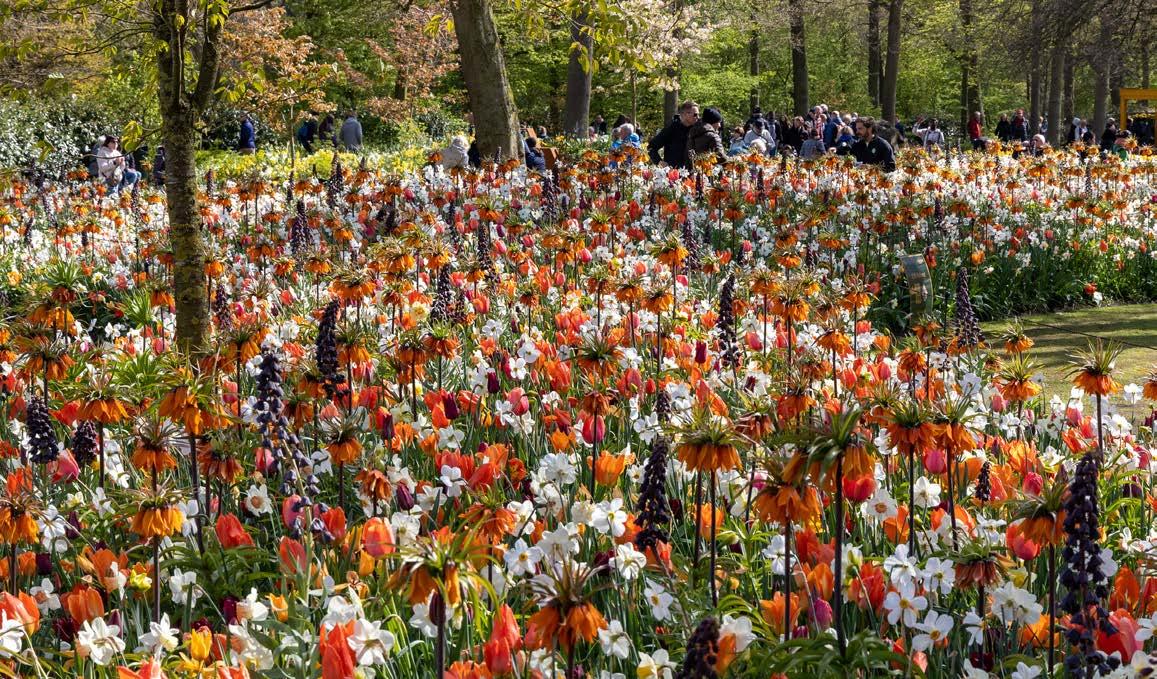
Carpets, woven in the most fantastic repeating patterns based on flowers and floral motifs and rich, colour schemes, formed the inspiration. Saturated colours of burgundy red, black, purple, bronze, ocher, warm orange and brown were chosen, with contrast colours/ accents of warm yellow and cream.
3-5 25-100 cm 110/m2
Inspired by the many shades of indigo, a very diverse mixture was chosen. The naturalizing bulbs provide the blue tone, while the mauve and lilac shades of the tulips and the moonyellow shades of the daffodils provide depth and colour contrast.


2-5 25-70 cm 110/m2


An early-flowering, high-contrast combination. White crocuses with bright red crocus-like short tulips. A nice fresh start to the spring season.
3-coloured mixture of single early tulips. Identical in shape but different in colour. Compact growth. A favourite mixture every year at Keukenhof.


A fresh early-flowering combination. Short pink with white kaufmanniana tulips mingled with purple/ white striped and purple and lilac largeflowered crocuses.

A favourite among our eye-catchers. A cheerful mixture of orange, yellow and white. Stately largeflowered fosteriana tulips.
35-40 cm 100/m2

A winner with scent and colour. Several hyacinth varieties, beautiful salmoncoloured greigii tulips and subtle bicoloured blue grape hyacinths.
3-4 35-40 cm 100/m2

The scent of spring awaits you. Beautiful combination of many hyacinth varieties. Indispensable in spring borders and flower beds.
3-4 25-35 cm 50/m2

Combination of two beautiful bicoloured tulip varieties in lilac, pink and white tones.
Striking purple and white lily-flowering tulips in harmony with various yellow and white narcissi. Fragrant combination.


A classic. A favourite mixture in our range for many years. A simple but exuberant combination of tulips and narcissi in yellow, orange and white.

A striking yet subdued combination of lily-flowering tulips with richly flowering narcissi and bicoloured grape hyacinths in the base..
4-5 15-55 cm 150/m2

The name says it all. A feast of colour. Many types of tulips and various hyacinths for scent and colour.
4-5 25-55 cm 100/m2

A gentle pastel mix of various double tulips. A subdued mix for an impressive display in the spring border.
4-5 40-55 cm 100/m2

Pink represents love. A striking combination of 3 beautiful tulip varieties. Stunning in combination with e.g. blue grape hyacinths, but also among earlysprouting perennials.
A classic in our eyecatcher range. A daring combination and therefore striking in large flower beds or perennial borders.


The name is clear, a cheerful and festive mixture of tulips in all colours.

A combination of 3 double early tulips with orange, salmon, pink and red colours. A special and daring mix.

The ‘black’ tulip in this mixture makes it a colourful combination with a twist. Only tulips 4-5
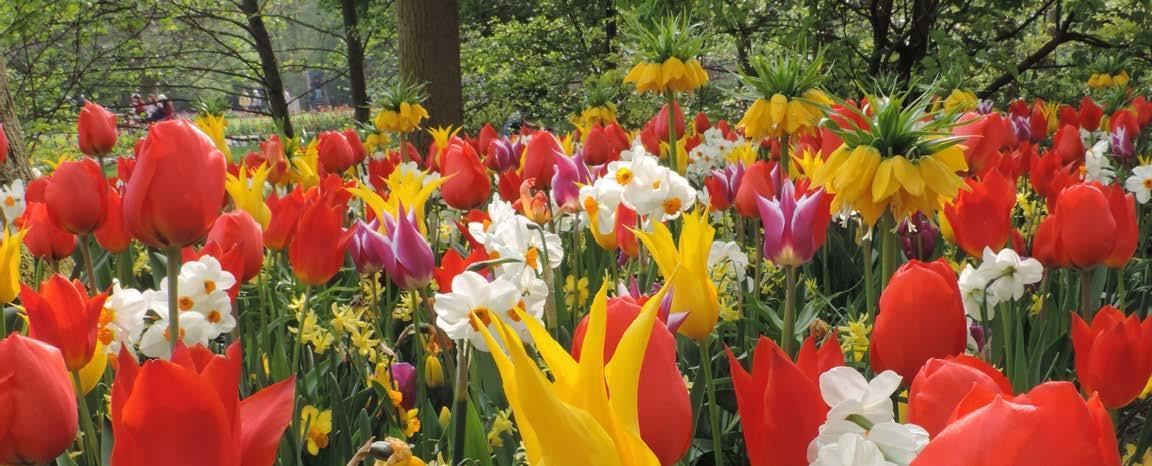
One of the combinations with the yellow crown imperial. Highcontrast tulip varieties that reinforce each other with playful and fragrant narcissi in between.

The fragrant white and pink hyacinths form the basis of this mainly pink and red bulb mixture.
One of our most special eye-catchers. Flowers that could come straight off a 17th century painting. Bicoloured tulips and, among others, crown imperials.


White and yellow are the basic colours of this fresh combination. Subtle daffodils and large cream-white tulips.

A combination with the focus on purple but with pink and white accents. Pink and purple hyacinths provide fragrance and bloom in the base of this mixture.
4-5 25-55 cm 80/m2

Overwhelming combination of white, pink and lilac. This mixture of both tulips and daffodils makes a striking appearance in parks, but e.g. also on roundabouts.
4-5 40-55 cm 100/m2

One of our favourite combinations. Various types of yellow with pink-red accents. A mixture full of colour and scent.
3-4 25-35 cm 80/m2

A combination of not too tall single early ‘Prince’ tulips. Striking and compact.
A mix of exclusively bicoloured tulips. Special and striking. Tulips that resemble the ‘historical’ Rembrandt tulips. An expressive mix that will draw a lot of attention.


Double late tulips that resemble peonies. Pastel colours make this combination applicable everywhere. Plant large numbers for the best results.

Fosteriana, a group of tulips, fairly early flowering and large flowers. This combination consists of 3 beautiful members of the group.
3-4 35-40 cm 100/m2

Another beautiful combination with purple as the main colour. 3 types of triumph tulips that match each other perfectly.
4-5 40-50 cm 100/m2

A combination of 4 double tulips. Strong in colour and therefore striking. For a spot in a planting bed that will receive the necessary attention. A floral sunset.
4-5 30-40 cm 100/m2
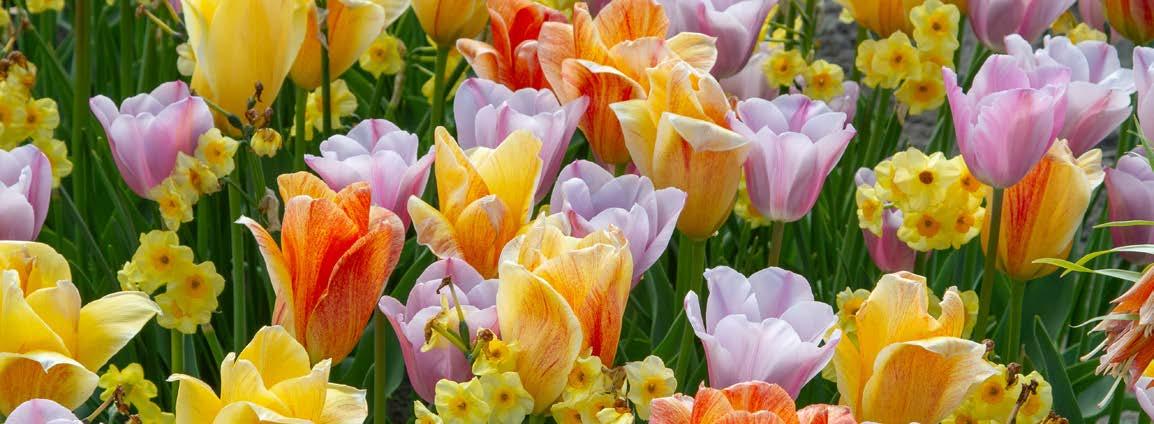
The yellow and orange narcissi play an important role in this combination and form the basis of a captivating mix of yellow, orange and pink.
Vibrant colour combination of three large-flowered Darwin hybrid tulips. For sunny locations that receive full attention.


An almost romantic combination of blue grape hyacinths with light pink botanical tulips. A combination that can be applied anywhere.

Cheerful colour combination of various spring bulbs. Fragrant hyacinths, impressive crown imperials and many types of tulips. So tempting.
4-5 15-90 cm 120/m2
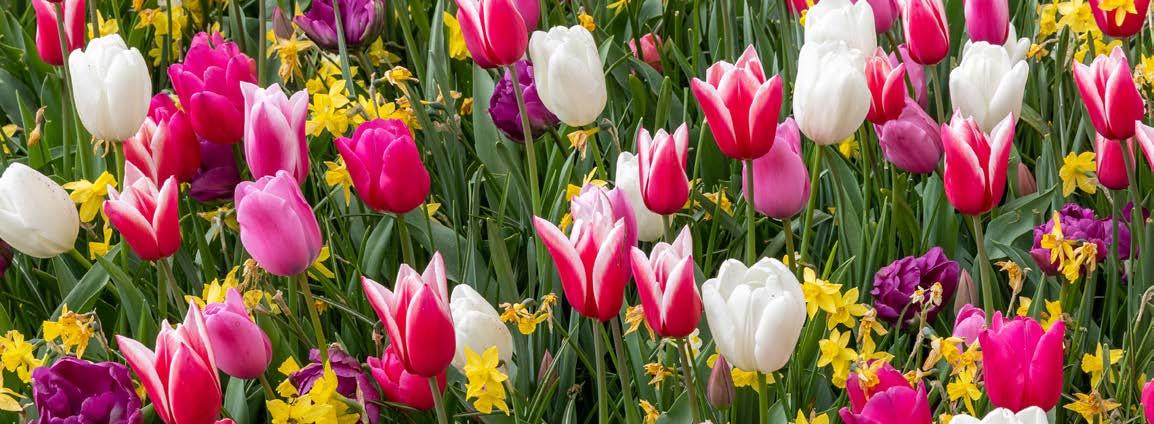
A ‘no nonsense’ combination of (pink) red, white and yellow. Cheerful colours to start the weekend. Lots of tulips and some playful yellow daffodils.
3-5 20-55 cm 60/m2

The colours of this combination give the impression of many types of wine. Red, rosé and sparkling white. A mixture that will fit perfectly in a restaurant garden.
4-5 30-60 cm 100/m2

An impressive combination of pink, white and green. A soothing pastel mix that fits beautifully in borders or public gardens.
Simple but so beautiful. Various Triumph tulips in white and pink with blue grape hyacinths as a background.
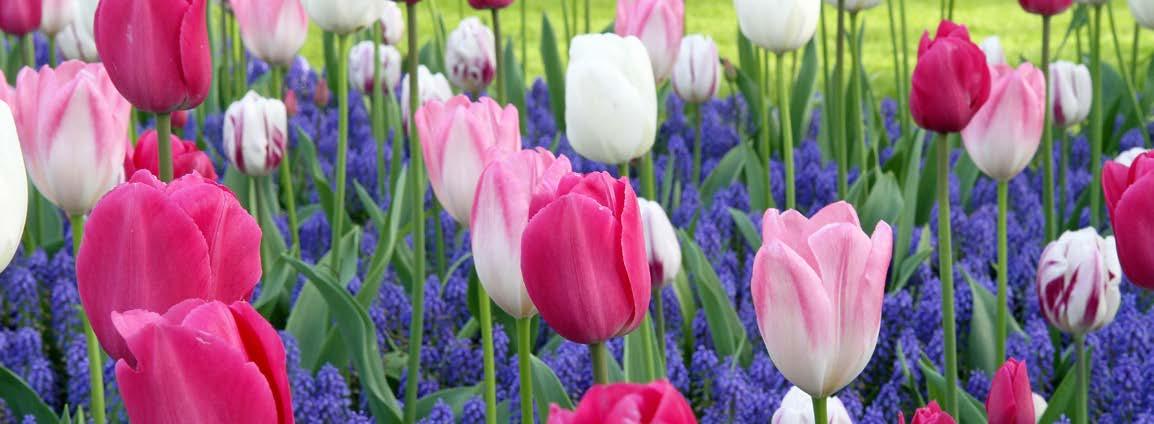

So many beautiful species together in a striking combination of pink, white, orange and salmon. A rich mix with a peaceful appearance.

A combination of different types of bulbs with various shapes and special colours. A standout feature is the addition of the purple crown imperials.
4-5 15-90 cm 110/m2

Warm red and fresh white tulips, subtle white daffodils with, as extra special feature, the impressive white-green crown imperials. A bold combination.
4-5 25-80 cm 100/m2

A favourite eyecatcher. Various white and pink tulips. An elegant combination. Medium and high tulips, single and double flowers.
4-5 25-55 cm 100/m2

All lily-flowered tulips are elegant. Especially this combination of white, orange and purple varieties. Their beautiful flower shape makes this mixture stand out even more.
Classic blend of orange, yellow and two-tone blue. A rich combination with impressive colours.


A combination of two double early tulips with soft yellow and pink colours. A special mix.

Soft pastel shades from white to dark pink. A combination of hyacinths and tulips. A fragrant mixture.
4-5 25-60 cm 100/m2

A combination that is not only beautiful at the end of the day. It makes you happy. Striking orange triumph tulips with lightly scented narcissi.
4-5 40-55 cm 100/m2

Stately pink-red tulips contrast beautifully with the mix of various daffodils and smaller tulips. Contrasting but in harmony.
4-5 15-60 cm 100/m2

CHEER YOU UP
Special colour combination of two types of strong triumph tulips. Reddish-brown and striking pink.
3-coloured combination of impressive Darwin hybrid tulips. Red, yellow and purple. Striking in many ways.

REASON TO BE CHEERFUL

High-contrast red and white. 2 very short, mid-early tulips with cup-shaped flowers. Great for creating a special effect in borders or in public gardens.

Orange predominates in this combination. From bright to pastel. Striking combination in the spring border.

Special combination of intense purple, lilac and lilac-pink colours with a touch of white for contrast.

A combination with style. Various triumph tulips in lilac, purple and salmon colours, combined with cheerful white and orange tazetta narcissi.

FRAGRANT
Stately combination of several late tulips. Impressive. A (late) spring party!
Purple and pink are the basic colours of this fragrant combination, with the addition of a few white accents of tulips and daffodils.


Pink, white and lilac. Pastel colours that glisten in the sun. As additional decorative elements, this combination also contains bee-attracting blue camassias.

Sparkling and flashy. A combination of orange lily-flowering tulips and 2 types of large-flowered yellow daffodils.

Illustrious lateflowering combination of white and black tulips. A big contrast but immediately a striking appearance. 4-5

Combination of strong colours that stand out in late spring. A high contrast but that is why it is so special. Black, red and white and the icing on the cake: blue camassias. 4-6


On the following pages you will find our extensive assortment of loose flower bulbs.
The symbols show information such as flowering time, height and recommended number of bulbs per m2.












































































































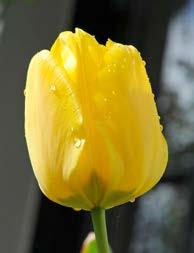





Rem’s Favourite
















Request



































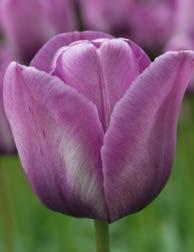























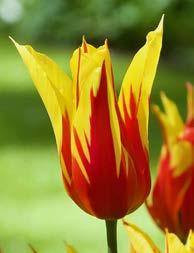





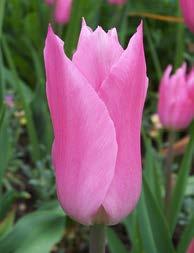












TULIPA FRINGED - SINGLE -





















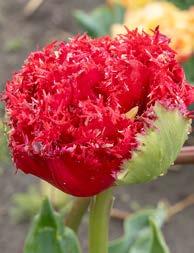
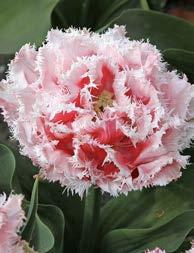















































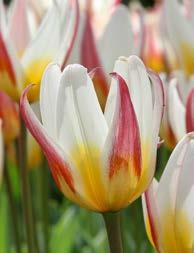

































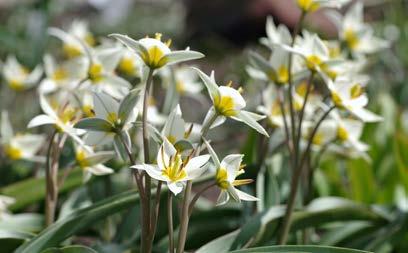





























































































































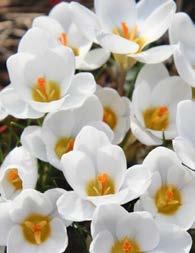





























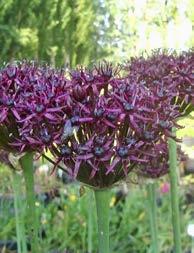











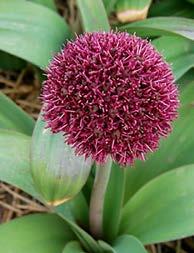
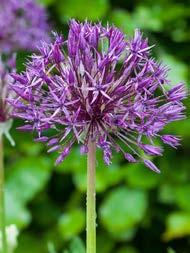











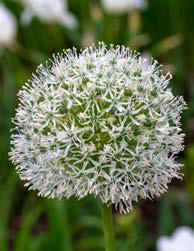






















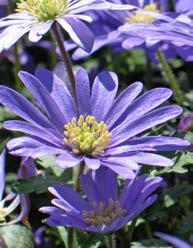








































150/m.2
















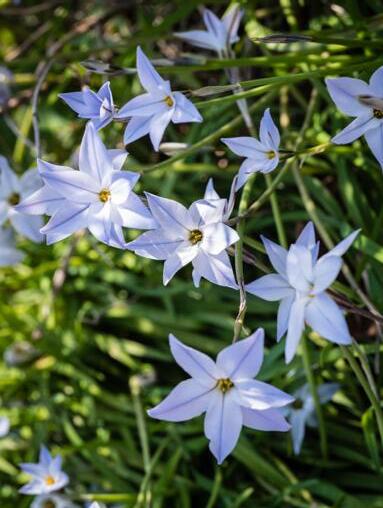










IRIS SMALL
150/m.2








75/m.2


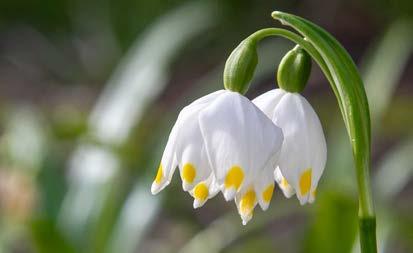














MUSCARI - CONT’D -
150/m.2














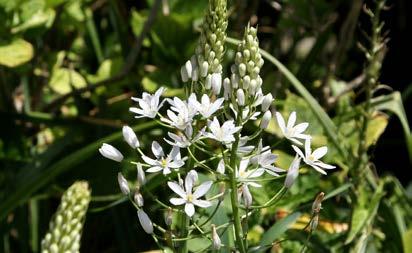














Dichelostemma Ida-maia









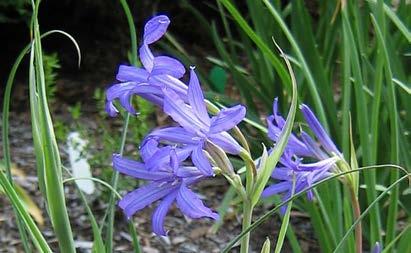






















VERIFIED AND CERTIFIED
We obtain our bio / organic flower bulbs from our own nursery and reliable organic growers who do everything possible to grow their bulbs as organically and sustainably as possible.
These bulbs also deliver a great contribution to the wellfare of bees, butterflies and other insects (biodiverstity).

All bio/organic bulbs carry the SKAL logo



















































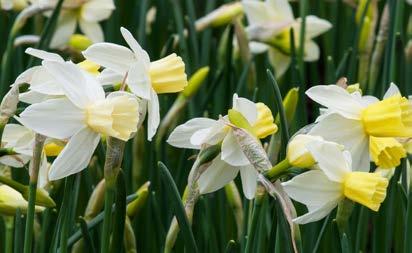





















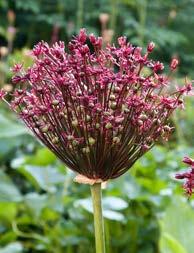

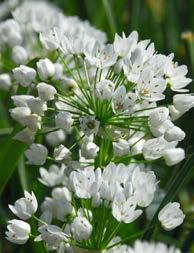






































Since this year, a new JUB border has been added to Keukenhof with a combination of organic bulbs and peat-free grown perennials.
This border remains intact. Neither the bulbs nor the perennials will be removed. Only maintenance will take place. This border provides inspiration for both private individuals and gardeners.
Allium - large flowering
Allium - small flowering
Amaryllis
Anemone coronaria
Anemone blanda
Anemone - other
Arum
Camassia
Chionodoxa
Colchicum
Corydalis
Crocus - large flowering
Crocus - species
Cyclamen
Dichelostemma
Dracunculus
Eranthis
Eremurus
Erythronium
Fritillaria - large flowering
Fritillaria - small flowering
Galanthus
Geranium tuberosum
Gladiolus byzantinus
Hyacinthus
Hyacinthoides
Ipheion
Iris hollandica
Iris - small flowering
Ixia
Ixiolirion
Leucojum
Lilium
Muscari
Narcissus - large flowering
Narcissus - botanical
Ornithogalum
Oxalis
Puschkinia
Ranunculus
Scilla - small flowering
Scilla - large flowering
Sternbergia
Triteleia
Tulipa - Darwin Hybrid
Tulipa - Double early
Tulipa - Double late
Tulipa - Single early
Tulipa - Single late
Tulipa - Fosteriana
Tulipa - Fringed
Tulipa - Greigii & Kaufmanniana
Tulipa - Lily flowering
Tulipa - Multi flowering
Tulipa - Parrot
Tulipa - Botanical
Tulipa - Triumph
Tulipa - Viridiflora
B = Biological / Organic
Variety Pa ge
All. Ambassador 113
All. scord. Art 115
All. atropurpureum 113
All. caeruleum 114
All. Cameleon 114
All. cernuum 114
All. christophii 113
All. christophii - B 134
All. cowanii 114
All. cowanii – B 134
All. Early Emperor 113
All. Eros 114
All. Firmament 113
All. flavum 114
All. Forelock 113
All. Gladiator 113
All. Gladiator – B 134
All. Globemaster 113
All. Graceful Beauty 114
All. karataviense 114
All. Lucky Balloons 113
All. Magic 113
All. Magic – B 134
All. Miami 113
All. moly 114
All. Mount Everest 113
All. Mount Everest - B 134
All. neapolitanum 114
All. neapolitanum – B 134
All. nigrum 113
All. nigrum – B 134
All. Ostara 113
All. Ping Pong – B 134
All. Purple Rain 113
All. Purple Rain – B 134
All. Purple Sensation 113
All. Purple Sensation - B 134
All. Red Giant 113
All. Red Mohican 113
All. roseum 115
All. Rosy Dream 115
All. schubertii 114
All. schubertii - B 134
All. schub. Arctic Snow 114
All. siculum 113
All. Silver Spring 114
All. sphaerocephalon 115
All. sphaerocephalon - B 134
All. Spider 114
All. Summer Drummer 114
All. Triquetrum 115
All. ursinum 115
All. Violet Beauty 114
All. Violet Beauty – B 134
All. vineale Hair 115
All. White Giant 114
All. Yellow Fantasy 115
Amar. Apple Blossom 127
Amar. Clear Red 127
Amar. Double Red 127
Variety Pa ge
Amar. Dbl. Red and White strip 127
Amar. Double Salmon 127
Amar. Double White 127
Amar. Pink 127
Amar. Red 127
Amar. Red/White 127
Amar. Red and White Striped 127
Amar. Salmon 127
Amar. White 127
Amar. White, red edgde 127
Anem. blanda Blue Shades 115
Anem. blanda Charmer 115
Anem. blanda Mix 115
Anem. blanda White Splendour 115
Anem. Bride 115
Anem. De Caen Mix 115
Anem. Hollandia 115
Anem. Mr. Fokker 115
Anem. nemorosa 115
Anem. ranunculoides 115
Anem. St. Brigid Mix 115
Arum italicum 124
Arum maculatum 124
Cam. cusickii 116
Cam. cusickii – B 135
Cam. leichtlinii Alba 116
Cam. leicht. Caerulea 116
Cam. leicht. Caerulea - B 135
Cam. leicht. Sacajawea - B 135
Cam. leicht. Semiplena 116
Cam. quamash 116
Chion. forb. Blue Giant 116
Chion. forb. Blue Giant - B 135
Chion. forb. Pink Giant 116
Chion. forb. Pink Giant – B 135
Chion. luciliae 116
Chion. luciliae Alba 116
Chion. sardensis 116
Chion. Violet Beauty 116
Colch. autumnale 112
Colch. aut. Alboplenum 112
Colch. aut. Album 112
Colch. cilicicum 112
Colch. Giant 112
Colch. Waterlily 112
Corydalis cava 124
Corydalis Beth Evans 124
Corydalis Purple Bi 124
Croc. Advance 111
Croc. angustifolius 111
Croc. Ard Schenk 111
Croc. Blue Ocean 110
Croc. Cream Beauty 111
Croc. etruscus Rosalind
Croc. Flower
Croc. Flower
Croc. Fuscotinctus
Croc. Golden Yellow
Croc. Goldilocks
Croc. Jeanne d’Arc
Variety
Croc. Jeanne d’Arc - B 133
Croc. King of the Striped - B 133
Croc. Large flow. Mix 111
Croc. Mix Maastricht - B 133
Croc. Orange Monarch 111
Croc. Pickwick 110
Croc. Prins Claus 111
Croc. Remembrance 110
Croc. Romance 111
Croc. Romance - B 133
Croc. sativus 112
Croc. sativus – B 133
Croc. sieberi Tricolor 111
Croc. Snowbunting 111
Croc. species Mix 111
Croc. species Mix – B 133
Croc. speciosus 112
Croc. spec. Conqueror 112
Croc. tommasinianus 111
Croc. tomm. Barr’s Purple 111
Croc. tomm. Barr’s Purple – B 133
Croc. tomm. Ruby Giant 111
Croc. tomm. Ruby Giant - B 133
Croc. tomm. Whitewell Purple 111
Croc. Vanguard 111
Cycla. cilicium 112
Cycla. coum hybriden 124
Cycla. hederifolium 112
Cycla. hed. Album 112
Dichelostemma ida-maia 125
Dracunculus vulgaris 125
Eranthis cilicica 125
Erem. himalaicus 116
Erem. robustus 116
Erem. ruiter hybr. Cleopat 116
Erem. ruiter hybr. Mix 117
Erem. stenophyllus 117
Erythr. dens-canis Mix 125
Erythr. Pagoda 125
Erythr. White Beauty 125
Frit. Aurora 117
Frit. Early Dream – B 135
Frit. Green Eyes 117
Frit. Helena 117
Frit. Maxima Lutea 117
Frit. Red Beauty 117
Frit. Rubra - B 135
Frit. Rubra Maxima 117
Frit. Sunset 117
Frit. meleagris Alba 117
Frit. meleagris Mix 117
Frit. meleagris Mix - B 135
Frit. persica 117
Frit. pers. Ivory Bells 117
Frit. pers. Purple Dynamite 117
Frit. pers. Purple Favorite 117
Frit. raddeana 117
Frit. uva-vulpis 117
Galanthus elwesii 118
Galanthus nivalis 118
Galanthus Polar Bear – B 135
Galanthus woronowii
Hyacinthoides hisp. Excelsior
Hyacinthoides hisp. Excelsior – B
Hyacinthoides hisp.
Galanthus Flore Pleno 118 Variety Pa
Variety Pa ge
Ixia Mix 126
Ixiolirion tataricum 126
Leuc. aestivum 120
Leuc. Gravetye Giant 120
Leuc. Gravetye Giant - B 136
Leuc. vernum 120
Lilium per colour 121
Lilium asiatic mix 121
Lilium candidum 121
Lilium martagon Claude Shr 121
Lilium regale 121
Musc. armeniacum 121
Musc. armeniacum - B 136
Musc. arm. Nature’s Beauty 121
Musc. arm. Night Eyes 121
Musc. arm. Siberian Tiger 121
Musc. auch. Blue Magic 121
Musc. auch. Ocean Magic 121
Musc. auch. White Magic 121
Musc. azureum 121
Musc. Baby’s Breath 122
Musc. botr. Superstar 122
Musc. Casablanca – B 136
Musc. comosum 122
Musc. com. Plumosum 122
Musc. Joyce Spirit 122
Musc. Joyce Spirit – B 136
Musc. Lady Madonna 122
Musc. Grape Ice 122
Musc. latifolium 122
Musc. latifolium – B 136
Musc. Mountain Lady 122
Musc. Pink Sunrise 122
Musc. White Magic – B 136
Musc. Mix 122
Narc. Accent 105
Narc. Actaea 107
Narc. Angels Breath 108
Narc. Apricot Whirl 108
Narc. Avalanche 107
Narc. Avalon 105
Narc. Baby Boomer 108
Narc. Barrett Browning 107
Narc. Belcanto 108
Narc. Bella Vista 105
Narc. Botanical Mix 110
Narc. Brackenhurst 105
Narc. Bridal Crown 107
Narc. Bridal Crown - B 132
Narc. British Gamble 105
Narc. Cairngorm 105
Narc. canaliculatus 108
Narc. Carlton 105
Narc. Carice 108
Narc. Cheerfulness 107
Narc. Chromacolor 105
Narc. Cordubensis 108
Narc. Cosmopolitan 108
Narc. Dick Wilden 106
Narc. Double Mix 107
Variety Pa ge
Narc. Dutch Master 105
Narc. Eaton Song 108
Narc. Elka 108
Narc. February Gold 108
Narc. February Silver 105
Narc. Flower Drift 106
Narc. Flower Record 105
Narc. Fortissimo 105
Narc. Frosty Snow 106
Narc. Garden Opera – B 132
Narc. Geranium 107
Narc. Goblet 105
Narc. Gold Disc 108
Narc. Golden Bells 109
Narc. Golden Dawn 109
Narc. Golden Ducat 106
Narc. Golden Echo 109
Narc. Golden Harvest 105
Narc. Grand Soleil d’Or 107
Narc. Ice Follies 106
Narc. Ice King 106
Narc. Jetfire 109
Narc. Jetfire – B 132
Narc. Julia Jane 109
Narc. Kedron 107
Narc. Las Vegas 105
Narc. Large cupped mix 106
Narc. Lemon Beauty 108
Narc. Lieke 109
Narc. lobularis 109
Narc. Martinette - B 132
Narc. Milena 106
Narc. Minnow 109
Narc. Minnow - B 132
Narc. Mix – B 132
Narc. Mon Cheri 106
Narc. Moonlight Sensation 109
Narc. Mount Hood 105
Narc. My Story 106
Narc. New Baby – B 132
Narc. Obdam 106
Narc. odorus plenus 109
Narc. Orangery 108
Narc. Paperwhite 107
Narc. Papillon Blanc 108
Narc. Papillon Blanc - B 132
Narc. Pink Charm 106
Narc. Pipit 109
Narc. Polar Ice 107
Narc. Pre Party 109
Narc. Pride of Lions 106
Narc. Prinses Amalia 109
Narc. Prom Dance 109
Narc. Pueblo
Narc. Quail
Narc. Quail – B
Narc. Rapture
Narc. recurvus
Narc. recurvus - B
Narc. Red Devon
Narc. Replete 106
Narc. Replete - B 132
Narc. Rijnv. Early Sensation 105
Narc. Rijnv. Early Sensation – B 132
Narc. Rip van Winkle 109
Narc. Rip van Winkle – B 132
Narc. Sailboat 109
Narc. Sailboat - B 132
Narc. Salome 106
Narc. Segovia 110
Narc. Silver Chimes 110
Narc. Sir Winston Churchill 107
Narc. Slice of Life 108
Narc. Split corona Mix 108
Narc. Stainless 106
Narc. Standard Value 105
Narc. Starlight Sensation 110
Narc. Sun Disc 110
Narc. Sun Disc - B 133
Narc. Sunlight Sensation 110
Narc. Tahiti 107
Narc. Tête-à-Tête 110
Narc. Tête-à-Tête - B 133
Narc. Tête Bouclé 110
Narc. Tête Rosette - B 133
Narc. Topolino 110
Narc. Topolino – B 133
Narc. Toto 110
Narc. triandrus Thalia 110
Narc. triandrus Thalia - B 133
Narc. Victoria 106
Narc. Westward 107
Narc. White Petticoat 110
Narc. Yellow Cheerfulness 107
Narc. Yellow Parrot 108
Orn. balansae 122
Orn. nutans 122
Orn. Sochii 123
Orn. Sochii - B 136
Orn. umbellatum 123
Orn. White Trophy - B 136
Oxalis adenophylla 126
Puschk. libanotica 126
Puschk. libanotica - B 136
Puschk. libanotica Alba 126
Puschk. libanotica Alba – B 136
Ranunculus per colour 126
Ranunculus Mix 126
Scilla bifolia 123
Scilla bifolia Rosea 123
Scilla litardierei 123
Scilla mischtschenkoana 123
Scilla peruviana 123
Scilla siberica 123
Scilla siberica - B 136
Scilla siberica Alba 123
Scilla sib. Spring B 123
Sternbergia Lutea 112
Triteleia Corrina 126
Triteleia Corrina - B 136
B = Biological / Organic
Variety Pa ge
Tul. Crème Fraîche 92
Tul. Crossover 92
Tul. Crown of Dynasty 94
Tul. Crown of Negrita 95
Tul. Crystal Star 98
Tul. Cummins 98
Tul. Curly Sue 98
Tul. Danceline 91
Tul. Danique 103
Tul. Darwin Hybrid Mix 96
Tul. Davenport 98
Tul. Daydream 95
Tul. Denmark 92
Tul. Design Impression 96
Tul. Design Impression - B 130
Tul. Doll’s Minuet 100
Tul. Don Quichotte 92
Tul. Dordogne 97
Tul. Double Shake 91
Tul. Dream Touch 91
Tul. Dreamer 90
Tul. Dreamer – B 130
Tul. Drumline 91
Tul. Double early Mix 90
Tul. Dynamo 92
Tul. Dynasty 92
Tul. Elegant Lady 97
Tul. El Nino 96
Tul. Embrace 92
Tul. Escape 92
Tul. Estella Rijnveld 101
Tul. Fancy Frills 99
Tul. Fiery Club 100
Tul. Finola 91
Tul. Fire Wings 97
Tul. Flair 89
Tul. Flaming Flag 92
Tul. Flaming Prince 89
Tul. Flaming Purissima 102
Tul. Flashback 97
Tul. Fly Away 97
Tul. Formosa 100
Tul. Fortress 92
Tul. Foxtrot 90
Tul. Foxy Foxtrot 90
Tul. Francoise 92
Tul. Gavota 93
Tul. Fringed Mix 99
Tul. Golden Oxford 95
Tul. Goudstuk 102
Tul. Grand Perfection 93
Tul. Green Power 93
Tul. Groenland 100
Tul. Groenland – B 130
Tul. Gudoshnik Double 91
Tul. Hakuun 95
Tul. Heartbreaker 93
Tul. Helmar 97
Tul. Hemisphere 93
Tul. Hermitage 89
Tul.
Tul.
Tul.
Tul.
Tul. Parrot
Tul. Parrot
Variety
Tul. Paul Scherer 94
Tul. Peacock Mix 103
Tul. Phantom 99
Tul. Pink Delight 90
Tul. Pink Impression 96
Tul. Pink Impression – B 130
Tul. Pink Star 91
Tul. polychroma 104
Tul. praestans Shogun 100
Tul. pr. Zwanenburg 100
Tul. Pretty Princess 89
Tul. Pretty Woman 98
Tul. Princeps 102
Tul. Prinses Irene 89
Tul. pulchella humilis 104
Tul. pulch. Persian Pearl 104
Tul. pulch Violacea 104
Tul. Purissima 102
Tul. Purple Doll 100
Tul. Purple Dream 98
Tul. Purple Heart 98
Tul. Purple Pride 96
Tul. Purple Prince 89
Tul. Purple Prince – B 130
Tul. Qatar 99
Tul. Quebec 100
Tul. Queen of Night 97
Tul. Queensland 99
Tul. Rasta Parrot 101
Tul. Red Dress 95
Tul. Red Foxtrot 90
Tul. Red Impression 96
Tul. Red Impression - B 130
Tul. Red Paradise 89
Tul. Red Princess 91
Tul. Rem’s Favourite 94
Tul. Renown 97
Tul. Renown Unique 91
Tul. Request 94
Tul. Rhapsody of Smiles 97
Tul. Rigas Barikades 102
Tul. Rococo 101
Tul. Ronaldo 94
Tul. Ronaldo - B 130
Tul. Roodkapje double 103
Tul. Royal Virgin 94
Tul. Royal Virgin – B 130
Tul. Salmon Impression 96
Tul. Salmon Impression - B 131
Tul. Salmon Prince 89
Tul. Salmon van Eijk 96
Tul. Sanne 98
Tul. saxatilis 104 Tul. saxatilis – B 131
Tul. Scarlet
JUB Holland landscape catalogue 2025/2026
Lay-out: Joop Hüner. Photos: Joop Hüner, Robbert Uittenbogaard, Corine Hogewoning, iBulb, Floramedia and various growers. Cover photo: Erik Boschman







Robbert Uittenbogaard
Director - Landscape sales
+ 31 (0)6 5155 3625 (mobile) + 31 (0)252 204 112 (direct) robbert@jubholland.nl
Jaap-Jan Uittenbogaard
Director - Retail sales + 31 (0)6 5021 0935 (mobile) + 31 (0)252 204 110 (direct) jaap-jan@jubholland.nl
Jos Beelen
Sales Central Europe + 31 (0)6 5183 0080 (mobile) + 31 (0)252 204 114 (direct) j.beelen@jubholland.nl
Job van Eeden
Sales UK
+ 31 (0)6 4397 8319 (mobile) + 31 (0) 252 204 109 (direct) job@jubholland.nl
Jos Smit
Sales UK
+ 31 (0)6 5161 8326 (mobile) jos.smit@jubholland.nl
Pieter Teeuwen
Sales Scandinavia and Germany
+ 31 (0)6 2223 2750 (mobile) pieter@jubholland.nl



Peter van der Geer
Sales UK
+ 31 (06) 1453 8200 (mobile) peter@jubholland.nl
Zdeněk Fukula
Sales Czech republic, Germany (Poland) +420 777 301 742 (mobile) fukula@jubholland.nl
Jonathan Ralling
Sales UK +44 791 224 2116 (mobile) jonathan@jubholland.com




Juuso Anttila
Sales Finland + 35 840 023 2024 (mobile) taimiagentti@taimiagentti.fi
Cees van der Lip
Export manager
+31 (0)252 204 108 cees@jubholland.nl
Rick van Zelst
Assistant export manager
+31 (0)252 204 105 rick@jubholland.nl
1. Jac. Uittenbogaard & Zonen B.V. and its affiliated companies are referred to as ‘JUB Holland’. JUB Holland is affiliated with Anthos, the Dutch sector organisation for companies that trade in flower bulbs and arboriculture products. Anthos has drawn up general conditions for the sale and supplying of flower bulbs.
2. The Anthos terms and conditions and these supplementary JUB Holland terms and conditions apply to all contacts, contracts and trading with JUB Holland, which are hereinafter referred to together as ‘the applicable terms and conditions’.
3. JUB Holland sends the applicable terms and conditions to its potential contractual parties upon the initial contact, so that they are able to take note of the applicable terms and conditions before a contract with JUB Holland is concluded. The applicable terms and conditions can also be found on the JUB Holland website.
4. JUB Holland explicitly rejects all general terms and conditions (for sale and purchase) from contractual parties, which means they do not apply to contacts, contracts and trading with JUB Holland, unless agreed otherwise in writing beforehand and signed by JUB Holland. Agreement
5. An agreement including the applicable terms and conditions is concluded by means of a written confirmation by JUB Holland of an order or delivery, or by the unconditional and unamended acceptance by a contractual party of a proposal, offer or quotation made by JUB Holland and/or by the retention of products from JUB Holland.
6. Quotations and quotes made by or on behalf of JUB Holland are made without obligation and have a validity of 30 days, following which time quotations and quotes made by JUB Holland no longer apply and are invalid.
Supply and delivery
7. Products are supplied ex works JUB Holland in Noordwijkerhout.
8. If JUB Holland is unable to supply due to force majeure, for example due to disappointing harvest results, then JUB Holland reserves the right to cancel or adjust the agreement in whole or part.
9. Any delivery time quoted is deemed to be approximate and is never a strict deadline. JUB Holland is not liable for any injury (including harm, losses and damage) that results from late delivery.
Prices and Payment
10. The prices for JUB Holland-products are quoted in euros (€) exclusive of VAT and exclusive of additional costs, including those for packaging, inspections, levies and taxes. The price list issued by JUB Holland states the prices and the minimum order quantity per product.
11. Payment must be made no later than 30 days after invoice date. If payment is made within eight days then a 1% payment discount is given. If the payment deadline is exceeded then the contractual party is automatically in default, in which case JUB Holland is entitled to charge the statutory rate of interest and statutory payment collection costs, to suspend subsequent deliveries or to require payment in advance from that date.
12. JUB Holland retains ownership of its products until all its invoices have been paid in full. JUB Holland is entitled to fetch back products that have not been paid for on time.
A contractual party is not permitted to resell unpaid products or to use them or provide them as collateral.
13. JUB Holland is allowed to require payment in advance from new, foreign or poor paying contractual parties before the delivery of products is made.
Complaints / liability
14. A contractual party is required to inspect products for detectable defects as soon as they are delivered and to inform JUB Holland of these in writing within 7 calendar days. After this period, the products will be deemed to comply with the customary quality requirements and all complaints will be invalid.
15. Claims and/or complaints do not entitle a contractual party to suspend payments.
16. JUB Holland is insured against injury or damages that result from an attributable failure for an amount of 5 million euros per year. In addition to Article 8.2 of the Anthos terms and conditions the liability of JUB Holland is limited to the net invoice value of the products,
Jac. Uittenbogaard & Zonen B.V., Noordwijkerhout, The Netherlands, 01/01/2025

Royal supplier of colour